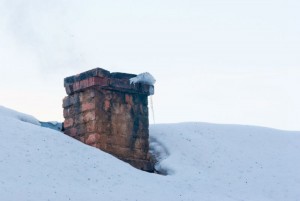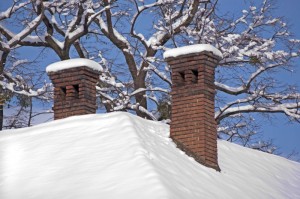Don’t Wait Untill Fall To Have Your Chimney Inspected
Savvy homeowners know that they should have their chimneys cleaned once a year. What you may not realize is the mindset of having your chimney cleaning done in the fall is not always the best practice. The chimney professionals from Chief Chimney Services in Central Suffolk County New York want homeowners to know that summer and spring are two of the best times to set an appointment for your annual inspection and cleaning.
Having a clear view of your chimney structure without regard to weather conditions also enables your chimney professional to block potential entrances for animals, birds, and rodents before they search for a warm place to spend the winter and enter your home via your chimney.
Summertime offers some distinct advantages when having your chimneys inspected and swept. First and perhaps the most obvious is the weather. It’s much easier to navigate on a roof that is not covered with ice and snow. Also, it is much easier to do a thorough inspection of the chimney, masonry, flashing, chimney cap, shingles, etc. when the area is not covered in ice and snow. If repairs are needed, extreme cold can affect the effectiveness of some sealant and masonry products. As the fall weather approaches, homeowners recognize the change of weather means fireplaces will once again be fired up and they need to be prepared, that’s why chimney companies are flooded with calls after Labor Day. Ashley Eldridge, Director of Education for the Chimney Safety Institute of America (CSIA) explains, “By scheduling (in summertime), you will have time to complete any necessary repairs before the start of the heating season. Not to mention the peace of mind you will get knowing that your fireplace or wood stove is ready to go for those dark days of winter.”
While sometimes spring rains impede inspections, the rainy season also allows your chimney professional to check for leaks and seepage and be pro-active with repair measures, that’s why springtime is also a good time for a chimney inspection, weather permitting.
There is also more appointment time flexibility when you schedule your appointment outside the busiest time of the year, which starts Labor Day and carries through until spring.
Having a clear view of your chimney structure without regard to weather conditions also enables your chimney professional to block potential entrances for animals, birds, and rodents before they search for a warm place to spend the winter and enter your home via your chimney.
Most chimney professionals are equipped to do service calls all year long and only the most extreme weather conditions prevent them from doing their work. The important thing to remember is to have a safety inspection and cleaning performed by a CSIA professional before using your fireplace for the first time each year.
The National Fire Protection Association (NFPA) Standard 211 also states that, “Chimneys, fireplaces, and vents shall be inspected at least once a year for soundness, freedom from deposits, and correct clearances. Cleaning, maintenance, and repairs shall be done if necessary.”
When you follow the recommendations of the chimney experts you know you will be saving on utility costs by ensuring your heating mechanisms are operating at maximum efficiency, and your family is safe for fire and toxic gas hazards.
Don’t wait, contact your local chimney professional today, and if you live in Suffolk County, call Chief Chimney Services.










